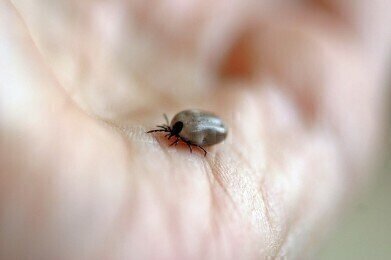News & Views
Why Are Tick-Borne Diseases on the Rise?
Jun 01 2018
From babesiosis to Lyme disease, ticks cause a host of health problems across the globe. Now, a new study released by the Centres for Disease Control and Prevention (CDC) warns that tick-borne illnesses are on the rise.
The report, which analysed data over a 13-year period, found that the number of reported illnesses borne from tick, mosquito and flea bites more than tripled. While in 2004 there were roughly 27,300 reported cases, annual figures spiked to 96,000 by 2016. Furthermore, nine additional germs spread by ticks, mosquitos and fleas were introduced to the United States during the study period. These included Zika virus, a mosquito borne illness that can cause serious birth defects.
"Illnesses from mosquito, ticks and flea bites continue to impact our nation," warns CDC Director Dr. Robert Redfield in a recent press conference. He cautions that these sorts of diseases are on the rise and that the nation needs to band together to prevent further outbreaks. "It will take all of us working together to prevent and control diseases" from these insects, he said. "There is a role for everyone."
Ticks account for 75% spike in vector-borne diseases
Drawing on information sourced from a national database, the research team analysed cases of 16 different vector-borne diseases. This included nine mosquito-borne diseases, six tick-borne diseases and a single flea-borne disease. Of more than 642,000 reported cases, more than 75% were carried by ticks. In fact, from 2004 to 2016 cases of tick-borne diseases increased by 50%. Lyme disease was the most common offender, with most cases isolated on the east coast.
Is climate change a culprit?
So what's behind the rise in tick and other vector-borne diseases? Redfield and his team assert that there are a handful of factors at play, including rising temperatures that could be helping to expand the range of ticks and the seasonal risk. While unconfirmed, the findings suggest that climate change could be a major culprit. Other factors include an increase in international travel, which can help spread illnesses like Zika and West Nile virus.
Ticks aren't the only culprits causing headaches, with airborne diseases spreading everything from influenza to tuberculosis. For a closer look at how modern laboratories are working to manage and prevent infection don't miss 'Monitoring Airborne Molecular Contamination in Indoor Cleanroom Air', which introduced the latest AMC technology from Chromatotec®.
Digital Edition
Lab Asia 31.2 April 2024
April 2024
In This Edition Chromatography Articles - Approaches to troubleshooting an SPE method for the analysis of oligonucleotides (pt i) - High-precision liquid flow processes demand full fluidic c...
View all digital editions
Events
Apr 28 2024 Montreal, Quebec, Canada
May 05 2024 Seville, Spain
InformEx Zone at CPhl North America
May 07 2024 Pennsylvania, PA, USA
May 14 2024 Oklahoma City, OK, USA
May 15 2024 Birmingham, UK






.jpg)











